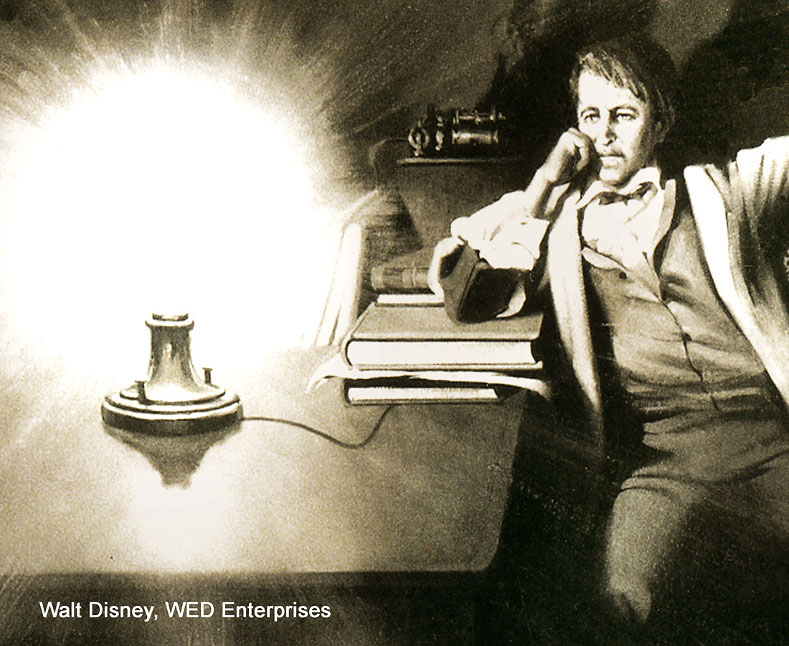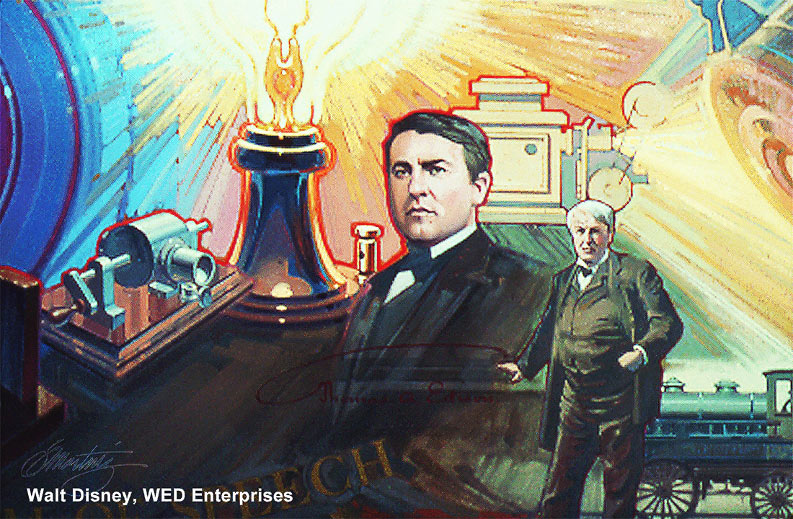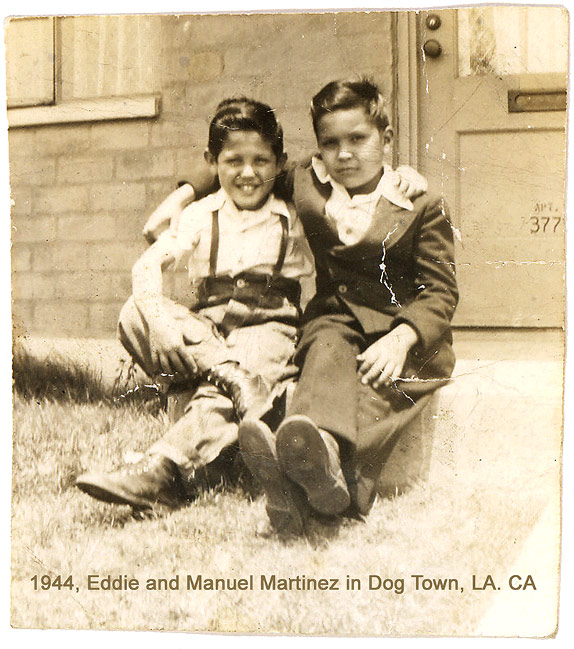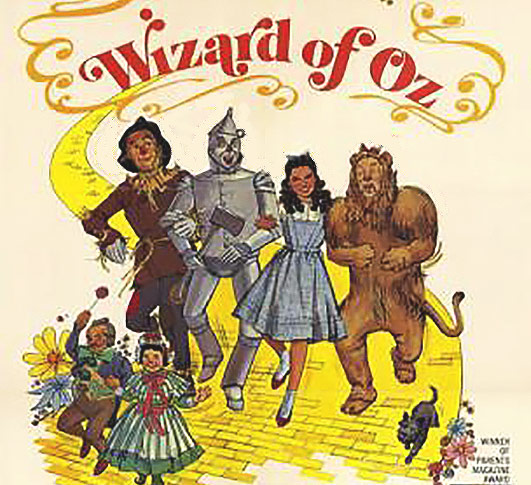The Light of Thomas Alva Edison
By Eddie Martinez
A PRELIMINARY DRAFT

Thomas Alva Edison, painted by Eddie Martinez in 1970 at WED Enterprise in Glendale, California, for “The Hall of Presidents” in Walt Disney World, Orlando, Florida

Thomas Alva Edison, painted by Eddie Martinez in 1975 at WED Enterprises, a mural of 12 notable historical charters including Walt Disney, for Disneyland, Anaheim, California
Thomas Edison’s movies were prelude to the Motion Picture industry, Hollywood, California

Edison’s Kinetograph Arcade, painted in 1970 by Eddie Martinez for “The Hall of Presidents”
Thomas Alva Edison began making moving pictures; first by creating the Incandescent Lightbulb. Then he assigned his employee William Dickson to construct a working camera and a viewing instrument that was called the Kinetograph to make silent movies. Thereafter they created the Kinetoscope that synchronized sound and motion (after having invented the Phonograph), and then he willfully constructed the first motion-picture stage that he nicknamed, “The Black Maria.”
Tom Edison’s motion picture studio went on to produce nearly 1,200 films. Those motion picture productions were short films such as Fred Ott’s, The Kiss, The Great Train Robbery, Alice’s Adventures in Wonderland, and finely, he completed the first Frankenstein film in 1910.
A Thomas Alva Edison quote:
The film is the most effective instrument of education.

Eddie Martinez and older-brother Manuel in the housing project called Dog Town
In 1942, when I was 6 years-old, I was enrolled in the 2rd Grade in the Ann Street Elementary School on the corner of Ann Street and North Main Street, between the Los Angeles Union Station/Olvera Street and the Los Angeles River bridge, that was within the Government housing project called, “Dog Town.”
It was during that time that I able to see my first motion picture in a movie theater. That was when our schoolteacher announced to the class that we were going on a field trip. So all the students held hands as we followed the teacher walking and walking as we crossed many streets until we arrived at a small movie theater. After the teacher paid for our admission, we walked into the dark filled theater to see the movie was already playing. The usher holding a flashlight guided us to wooden benches, against the aisle’s sidewall where we sat to watch the movie.
I watched in awe at the Technicolor movie The Wizard of Oz, simply spellbound.
 The 1939 "Wizard of Oz" Movie Poster
The 1939 "Wizard of Oz" Movie Poster
The trouble with our way of educating as generally followed is that it does not give elasticity to the mind. It casts the brain into a mold. It insists that the child must accept. It does not encourage original thought or reasoning, and it lays more stress on memory than on observation. The result of accepting unrelated facts foster conservatism. It breeds fear, and from fear comes ignorance. The seeing of things in the making is what counts. Then the mind can approach the gaining of knowledge without prejudice.
_ Thomas Alva Edison
. . . the back story is to be continued.
